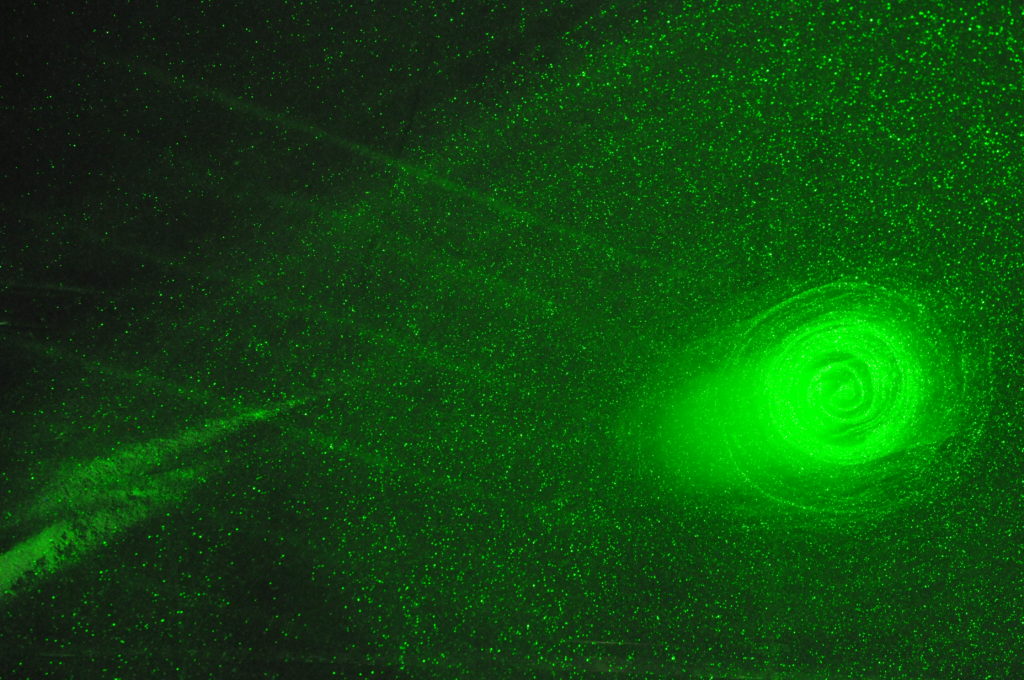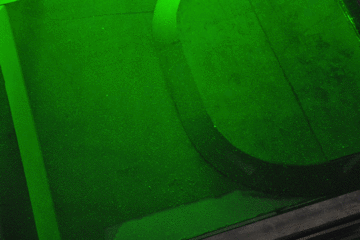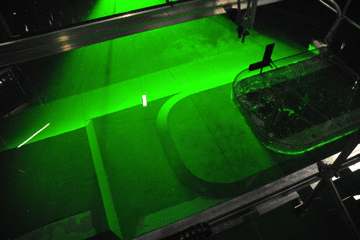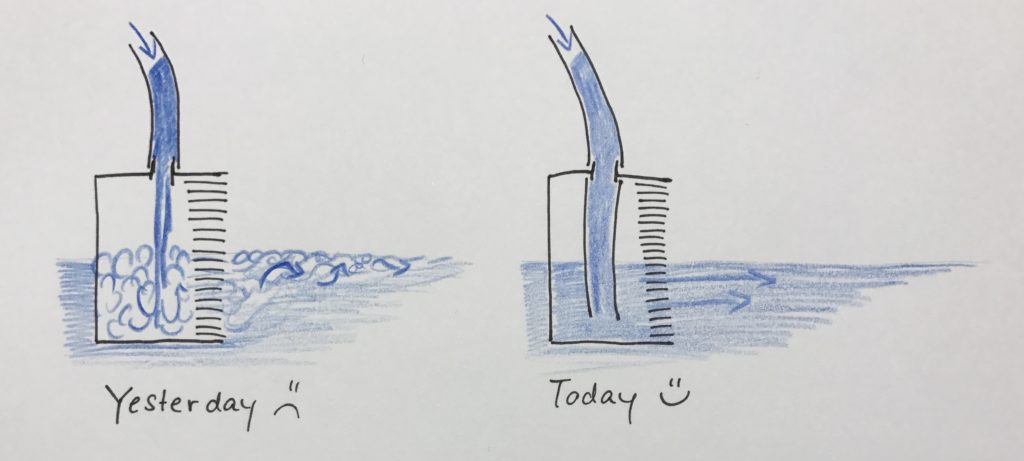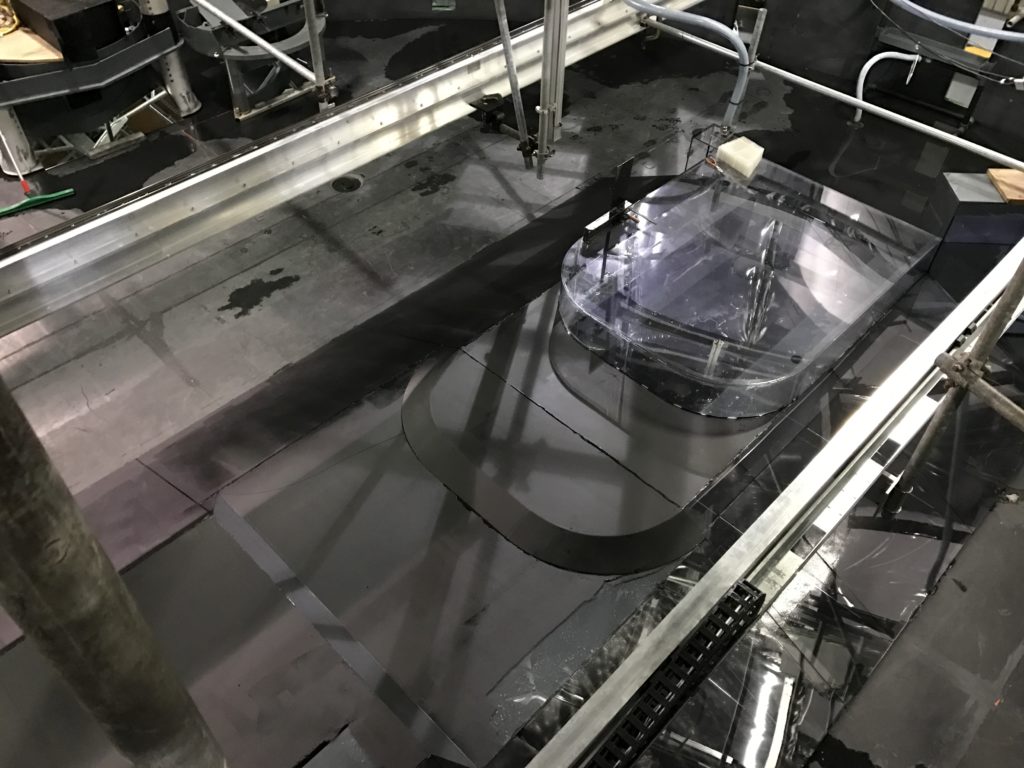We are very deep into discussing all the different ice shelf experiments that have happened so far. As you see above, the white board in our office is filled with drawings of our interpretations of the experiments.
And as you know, things don’t always go exactly as planned. Or, in fact, most of the time they don’t.
One thing that has been happening in our experiments is that water flowed out of the channel underneath the ice shelf. Not a lot of water, but after long discussions, we decided that — since in reality there is no way for water to come out that end of the channel, because there is land closing off the channel at the end — even a little water was too much and that we needed a way to block off that end of the channel.
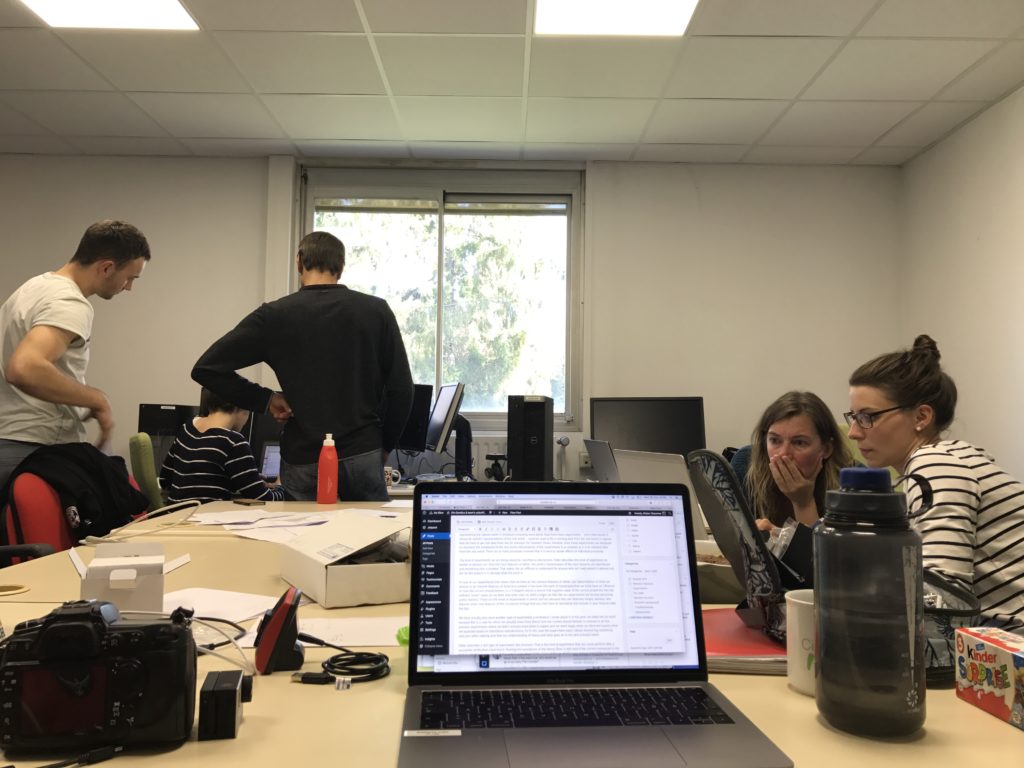
However, constructing anything inside a rotating tank full of water and with a lot of scaffolding just above the water level isn’t easy (as I found out when I was sweeping the tank, trying to duck under the scaffolding and flooded the waders I was wearing. Yep, true story…), so even after deciding that we needed a solution, it still took a lot more discussing until we actually had a solution that everybody was happy with.
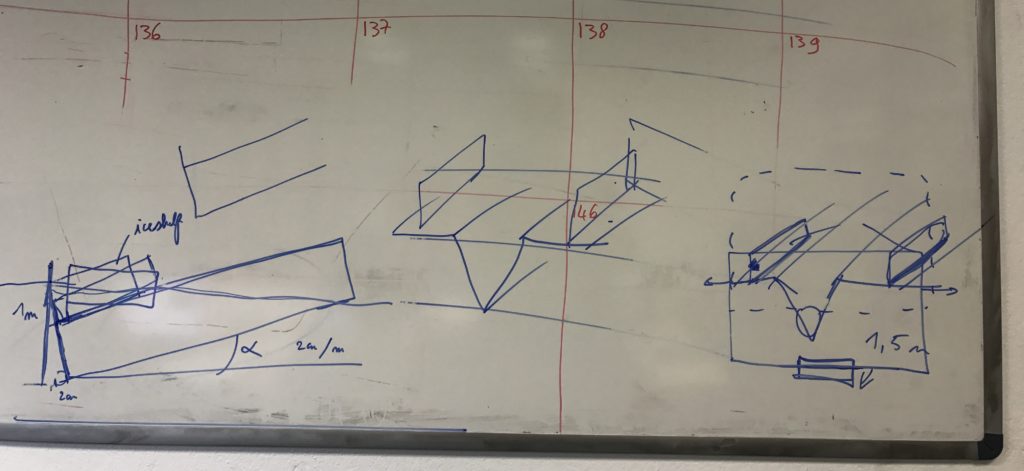
So now we will build a wall! And it is going to be huge! And it will block all the water so nothing is coming out of the channel any more. And it is going to be the best wall in the world (and maybe Mexico will pay for it? ;-))
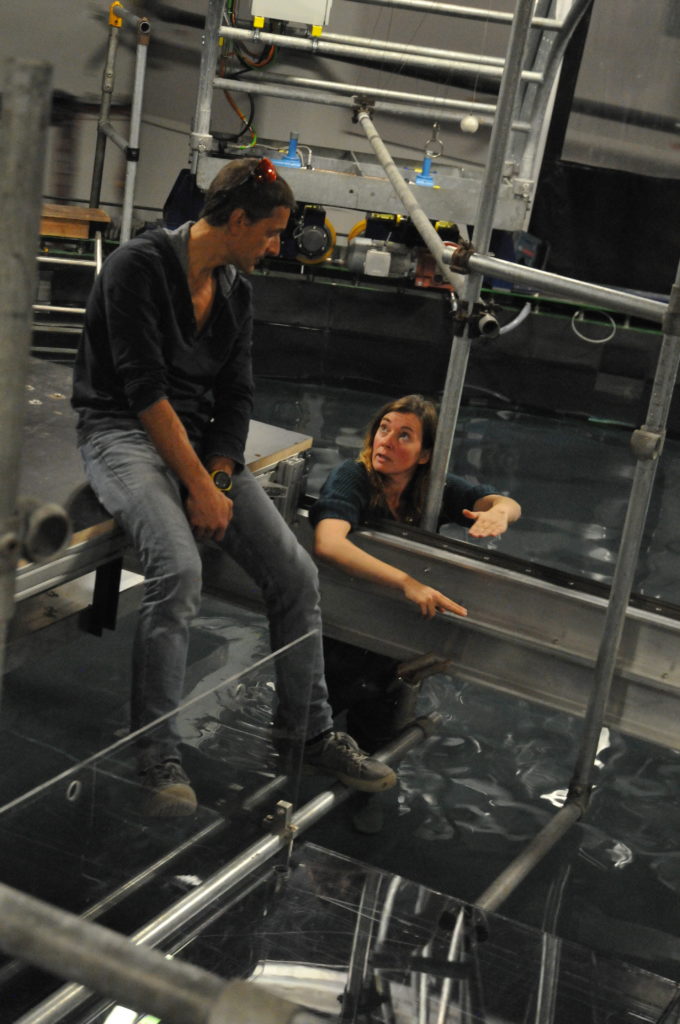
Actually, the wall is in the tank already, so now we’ll start investigating whether it actually has an effect or not!
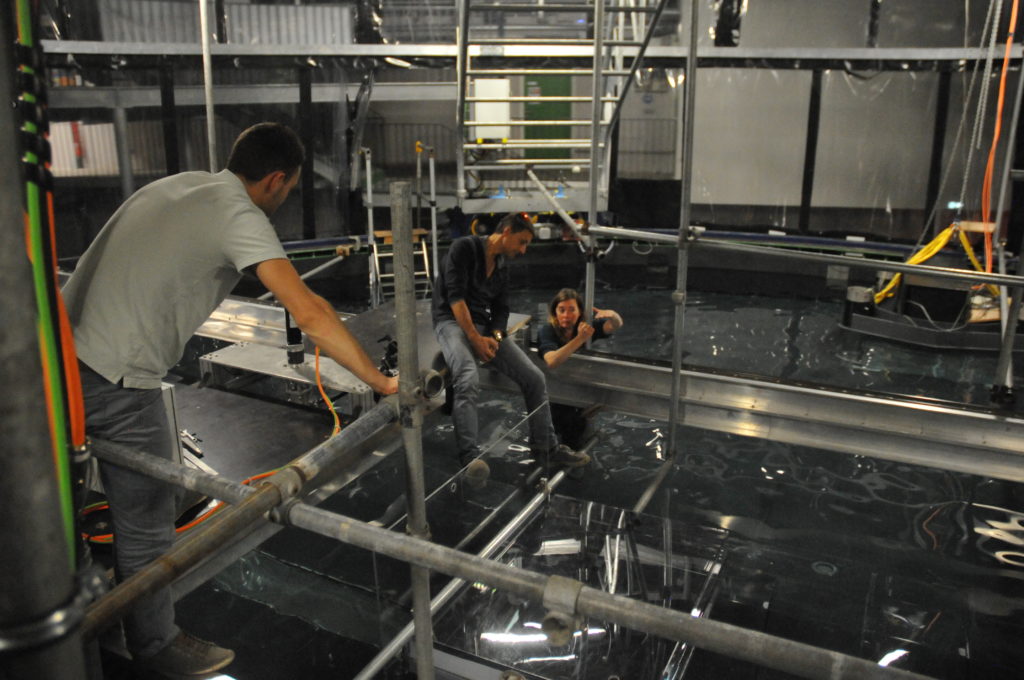
One thing we found out already: Moving a large wall back and forth in a tank creates nice eddies (duh!). But look at how pretty they are! 🙂
